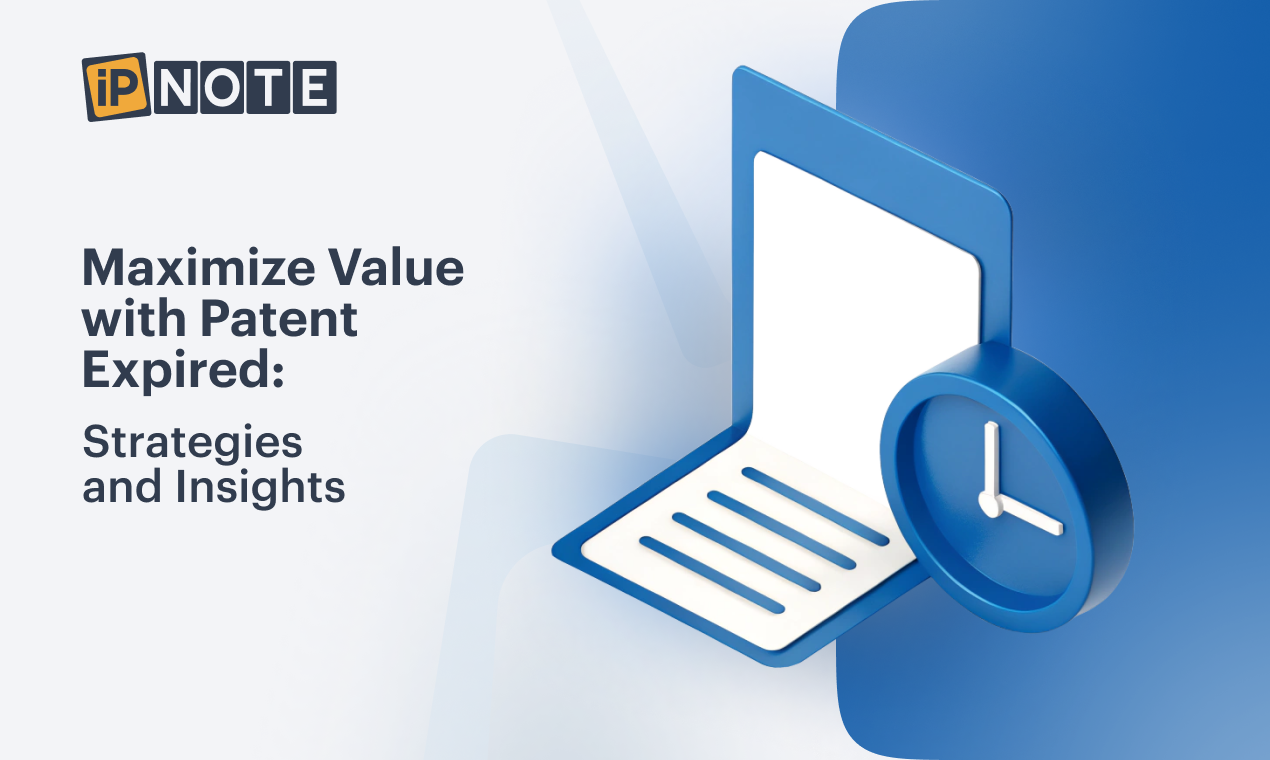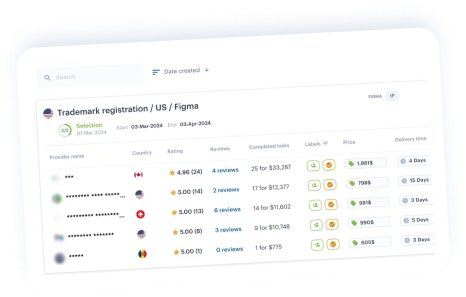Overview
The article emphasizes strategies for maximizing value from expired patents, underscoring their critical role in fostering competition and innovation. Businesses can harness these opportunities through:
- Market evaluation
- Innovation
- Licensing
- Collaboration
- Open innovation
However, navigating the legal complexities associated with lapsed intellectual property is essential for enhancing their competitive edge. By effectively managing these aspects, companies can position themselves advantageously in the market.
Introduction
The expiration of patents marks a pivotal moment in the lifecycle of innovations, unlocking a wealth of opportunities for both businesses and competitors. As patents approach their 20-year threshold, the exclusive rights previously held by inventors dissipate, leading to a surge in market activity and innovation. This transformative phase not only stimulates competition but also propels the creation of new products and services, as companies rush to leverage the now-available technologies.
Grasping the complexities of patent expiration is crucial for navigating this evolving landscape, where strategic market analysis, innovative adaptations, and legal considerations can profoundly influence a company’s competitive advantage. By delving into the ramifications of patent expiration and executing effective strategies, businesses can tap into the potential of expired patents to drive growth and strengthen their market position in an increasingly dynamic environment.
Define Patent Expiration and Its Significance
The conclusion of legal protection for an invention is signaled by the patent expired, which typically occurs 20 years after the application date for utility inventions. This pivotal moment occurs when the patent expired, allowing others to utilize, produce, and market the previously protected invention without seeking permission from the original rights holder. The ramifications of intellectual property lapse are profound; it not only fosters competition but also stimulates innovation by granting access to technologies that can be further developed or enhanced.
For companies, grasping the complexities of intellectual property term limits is vital for identifying new opportunities and adeptly navigating the competitive landscape. By capitalizing on the opportunities that arise when a patent expired, companies can innovate and create new products, thereby driving growth and enhancing their market position.
Recent data indicates that when a patent expired, it significantly impacts market dynamics, as numerous intellectual properties reach their expiration date annually, leading to increased competition and innovation. Expert insights, such as those from Kerstin N Vokinger, underscore the necessity of understanding pricing dynamics and cost-effectiveness models for businesses operating in the post-expiration environment.
Furthermore, case studies illustrating the influence of federal policies on research and development demonstrate how companies can leverage expired intellectual property to enhance their R&D initiatives. In this context, employing iPNOTE’s comprehensive AI-driven IP management solutions can optimize the management of intellectual property portfolios, automate task creation, and ensure complete transparency in provider selection, while also offering fixed-term agreements that can reduce IP management costs.
Understanding the intricacies of intellectual property duration is essential for effective IP management, as it plays a critical role in fostering a competitive environment that encourages continuous development and technological innovation.
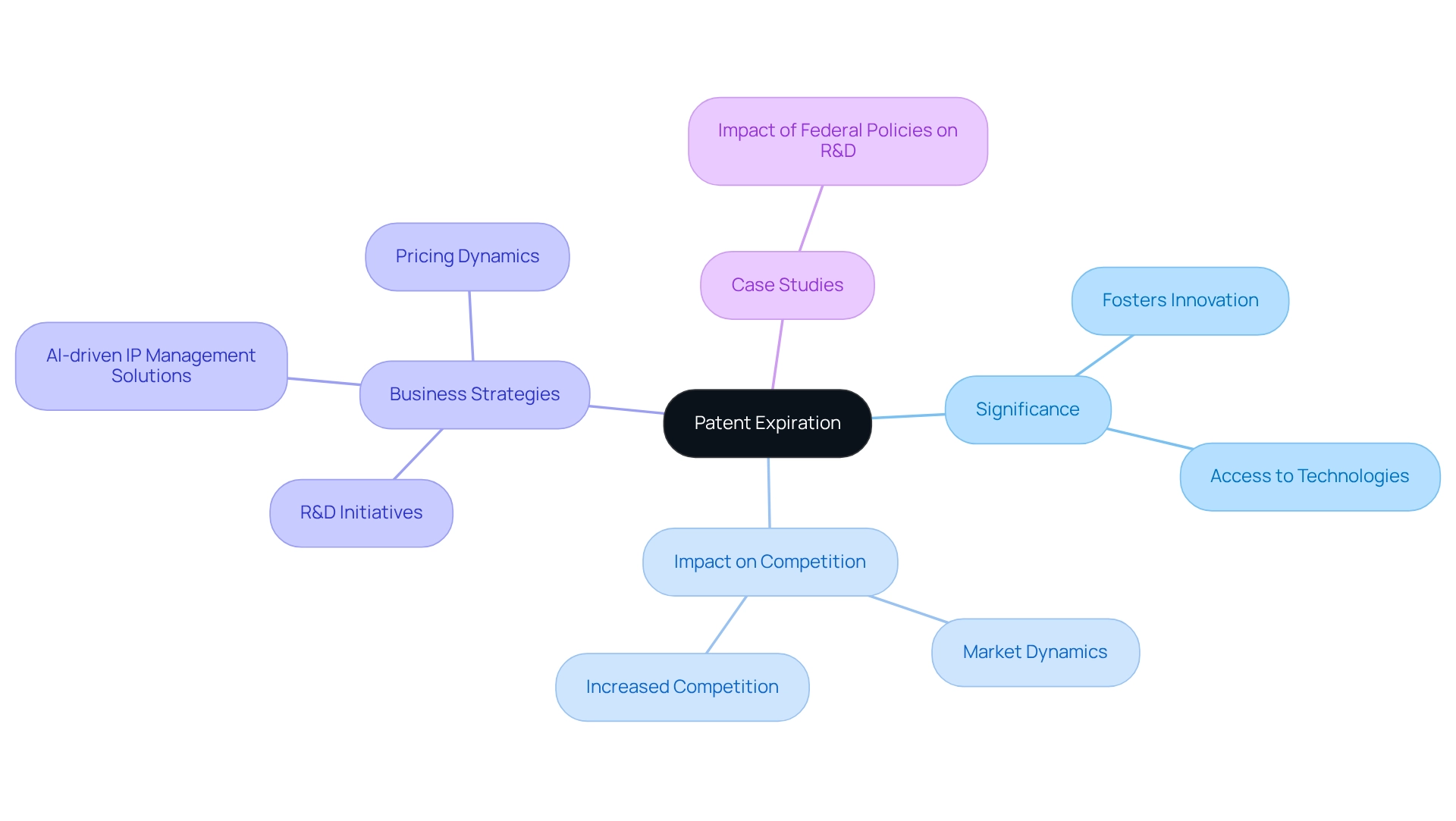
Explore Consequences of Patent Expiration
The consequences of a patent expired are significant and multifaceted. When a trademark lapses, rivals seize the opportunity to enter the industry with comparable products, often resulting in price decreases and heightened competition. This shift can lead to a substantial loss of market share and revenue for the original rights holder. For instance, a simulation model examining the effects of intellectual property expiration on drug pricing revealed that price variations over time can greatly influence incremental cost-effectiveness ratios, with skewed ratios ranging from 40% to −40%. This statistic underscores the financial stakes for original rights holders.
Furthermore, the influx of generic alternatives poses challenges for businesses striving to maintain customer loyalty and brand recognition. As the market becomes saturated with similar products, original rights holders must navigate the complexities of consumer preferences and competitive pricing strategies. Notably, companies have experienced significant declines in market share following the patent expired; a recent study indicated that firms could see market share decrease by as much as 40% in the first year after the patent expired.
Stuart Schweitzer, a Professor of Health Policy and Management, emphasizes the importance of understanding these dynamics, asserting that effective strategies are vital for addressing the challenges that arise with the termination of exclusive rights.
Nonetheless, the end of exclusivity also presents opportunities for innovation. Companies can harness the patent expired technology to create new products or enhance existing ones, potentially tapping into new market segments. A 2024 model that integrates NLP intellectual property analysis with clinical trial data achieved 89% accuracy in predicting first-year sales for new molecular entities, illustrating how companies are adapting to the challenges posed by the conclusion of exclusive rights. Understanding these dynamics is essential for developing effective strategies that not only mitigate risks associated with expiration but also capitalize on the opportunities it presents for growth and innovation.
Implement Strategies for Leveraging Expired Patents
To effectively utilize lapsed intellectual property, companies can adopt several strategic methods:
- Market Evaluation: Conduct thorough research to identify industry gaps that lapsed intellectual property can address. This analysis reveals opportunities for developing innovative products or services that meet current consumer demands. A cost-effectiveness simulation model indicates that neglecting price dynamics can lead to an overestimation of incremental cost-effectiveness ratios (ICERs) by 19% to 125%, underscoring the necessity for a comprehensive industry analysis.
- Innovation: Leverage insights from patents that have expired to enhance existing products. This may involve improving features, integrating new technologies, or reimagining applications to better satisfy customer needs. As highlighted by Miquel Serra-Burriel, overlooking generic market entry can distort incremental cost-effectiveness ratios, emphasizing the importance of a detailed market understanding.
- Licensing Opportunities: Investigate the potential for licensing lapsed inventions to other companies. This strategy allows others to utilize the technology while generating revenue streams for the rights holder. iPNOTE facilitates this process by enabling users to manage licensing agreements and track their progress efficiently.
- Collaboration: Establish strategic partnerships with other businesses to pool resources and expertise. Such collaborations can amplify the impact of lapsed intellectual property, resulting in more robust product offerings and a stronger market presence. With iPNOTE’s platform, companies can easily add service providers, delegate IP tasks to lawyers globally, and monitor their workflows, enhancing collaboration efficiency.
- Open Innovation: Engage in open-source projects that utilize lapsed intellectual property. This approach fosters community-driven creativity, potentially leading to new business frameworks and cooperative opportunities.
Moreover, iPNOTE’s AI-powered digital assistant aids in real-time management of intellectual property portfolios, ensuring that businesses remain agile and informed in their IP strategies. By implementing these strategies, companies can optimize the value derived from intellectual properties whose patent expired, promoting innovation and enhancing their competitive edge in the market. This approach also assists in navigating the complexities of intellectual property management and renewal costs.
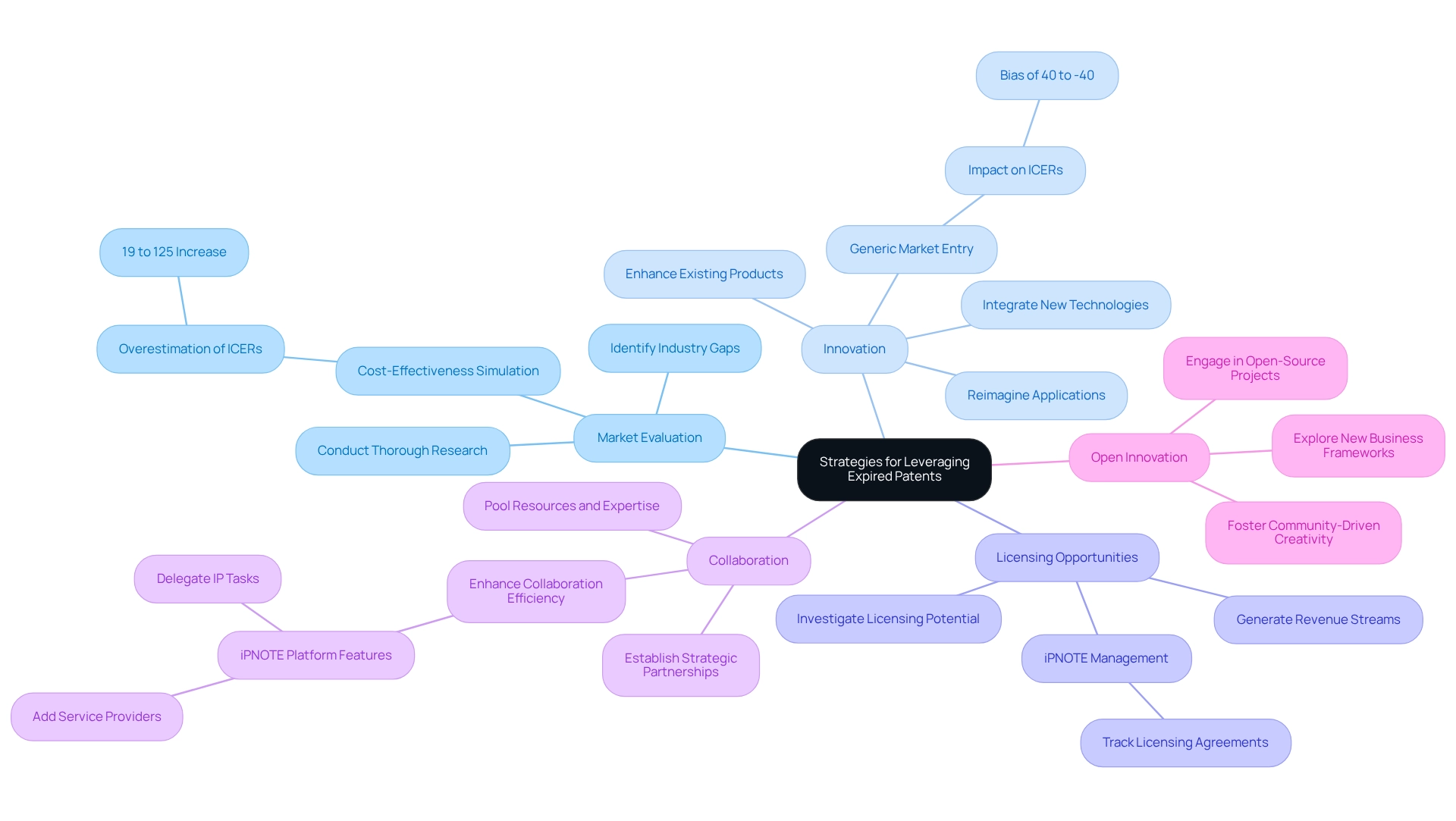
Navigate Legal Considerations and Compliance
Navigating the legal environment surrounding lapsed intellectual property requires careful consideration of several key factors. When the patent expired, a registered invention enters the public domain, enabling unrestricted use by anyone. However, it is crucial to confirm that the intellectual property has indeed lapsed and is not entangled in ongoing legal disputes.
- Prior Art: Expired licenses can serve as prior art for new inventions. While employing a lapsed intellectual property right is permissible, it is essential to ensure that any new invention is adequately novel and non-obvious to qualify for a new intellectual property right.
- Licensing Agreements: If you plan to license a lapsed invention, ensure that all contracts are legally sound and distinctly outline the terms of use to prevent possible conflicts.
- Adherence to Regulations: Be aware of industry-specific rules that may apply when utilizing technologies from outdated intellectual property, especially in fields like pharmaceuticals and biotechnology, where adherence is crucial. For instance, research has indicated significant price declines in medication costs across various nations following the patent expired of intellectual property rights, with the US witnessing the largest reductions. This underscores the importance of comprehending the consequences of a patent expired intellectual property within a business context.
- Monitoring for New Developments: Stay informed about changes in intellectual property legislation or the emergence of new protections that could affect the status of lapsed rights, ensuring ongoing compliance and strategic alignment with your business objectives. As noted by Miquel Serra-Burriel, ‘if exclusivity expiration occurs 14 years after market entry, disregarding price dynamics after exclusivity expiration has a very small impact on ICERs.’ This emphasizes the need for vigilance in monitoring patent statuses, particularly when a patent expired and understanding their financial implications. Incorporating insights from the case study titled ‘International Comparison of Drug Pricing Trends’ can further illustrate the practical implications of when a patent expired, highlighting the necessity for corporate IP managers to navigate these complexities effectively.
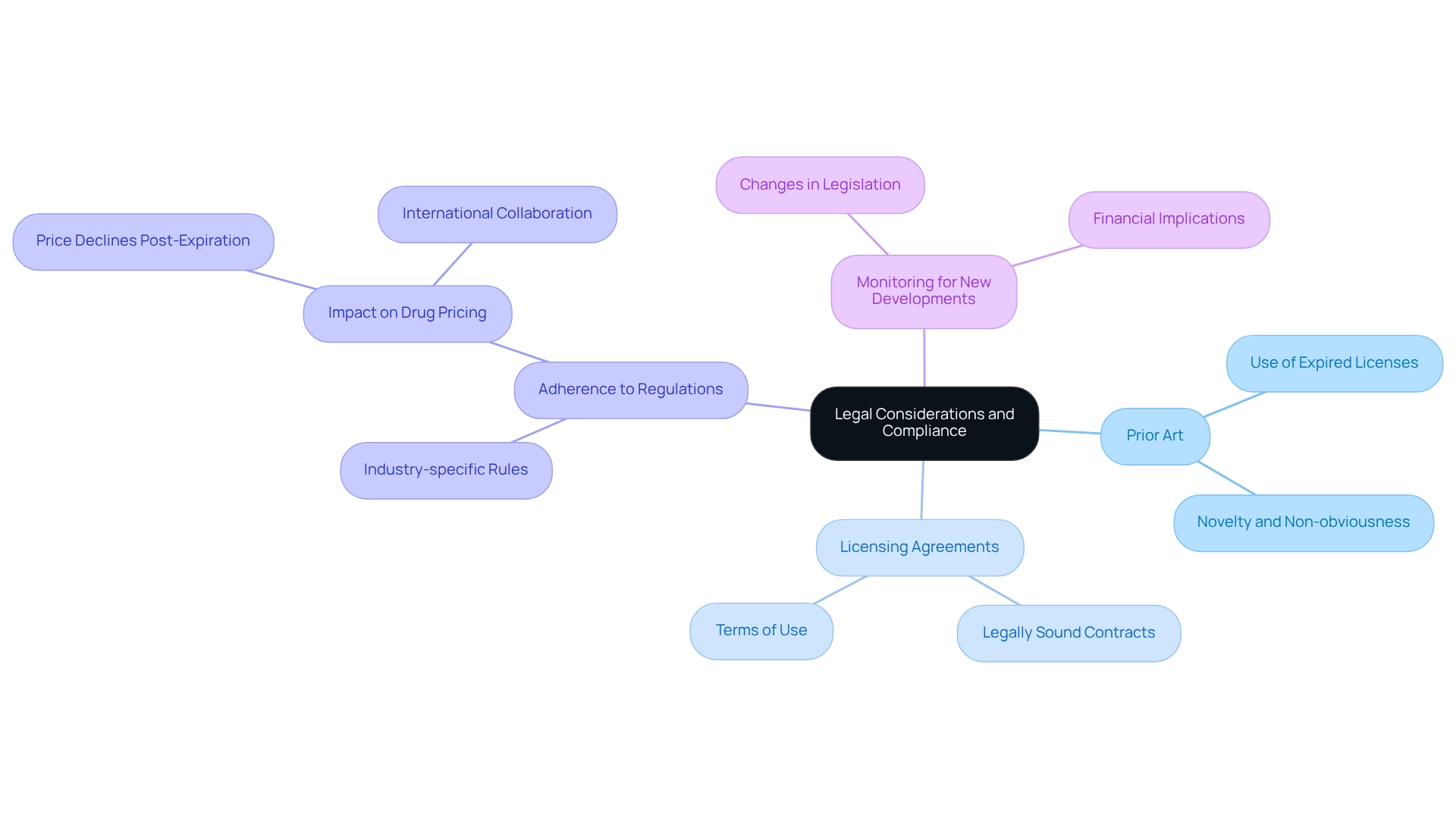
Conclusion
The expiration of patents represents a pivotal moment that reshapes market dynamics, fostering competition and driving innovation. As patents lapse, businesses gain access to previously protected technologies, enabling the development of new products and services. This transition not only sparks creativity but also challenges original patent holders to adapt their strategies to maintain market share.
To effectively navigate the implications of patent expiration, companies should conduct thorough market analyses to identify new opportunities.
Leveraging expired patents can enhance existing offerings, create licensing opportunities, and facilitate strategic partnerships that strengthen
market presence. Embracing open innovation can also lead to significant advancements and the emergence of new business models.
Legal considerations are essential in this landscape. Businesses must ensure compliance with regulations and monitor any ongoing disputes that could affect their use of expired technologies. Staying informed about changes in patent law and market trends is crucial for successfully capitalizing on the opportunities presented by patent expirations.
In essence, patent expiration serves as a catalyst for growth and innovation. By strategically leveraging expired patents and addressing the associated complexities, businesses can enhance their competitive advantage and thrive in a dynamic market. Taking proactive steps now will position companies for future success and sustainability.
Unlock New Opportunities with Expired Patents. Start now with iPNOTE and simplify your IP management for a competitive edge.
Frequently Asked Questions
What happens when a patent expires?
When a patent expires, typically 20 years after the application date for utility inventions, others can utilize, produce, and market the previously protected invention without seeking permission from the original rights holder.
How does patent expiration affect competition and innovation?
Patent expiration fosters competition and stimulates innovation by granting access to technologies that can be further developed or enhanced.
Why is it important for companies to understand intellectual property term limits?
Understanding intellectual property term limits is vital for companies to identify new opportunities and navigate the competitive landscape effectively, allowing them to innovate and create new products.
What impact does patent expiration have on market dynamics?
Patent expiration significantly impacts market dynamics, as many intellectual properties reach their expiration date annually, leading to increased competition and innovation.
What insights do experts provide regarding the post-expiration environment?
Experts emphasize the necessity of understanding pricing dynamics and cost-effectiveness models for businesses operating after a patent has expired.
How can companies leverage expired intellectual property for research and development?
Companies can leverage expired intellectual property to enhance their R&D initiatives, as illustrated by case studies showing the influence of federal policies on research and development.
What solutions does iPNOTE offer for managing intellectual property portfolios?
iPNOTE provides AI-driven IP management solutions that optimize the management of intellectual property portfolios, automate task creation, ensure transparency in provider selection, and offer fixed-term agreements to reduce IP management costs.
Why is understanding intellectual property duration critical for effective management?
Understanding the intricacies of intellectual property duration is essential for effective IP management, as it plays a critical role in fostering a competitive environment that encourages continuous development and technological innovation.




